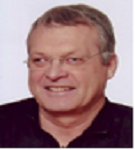
Robert Zorec
Professor
University of Ljubljana
Slovenia
Biography
Robert Zorec is Professor of Pathophysiology at the University of Ljubljana, Medical Faculty, a Full Member of Academia Europaea (London) and Slovenian Academy of Sciences and Arts (cont. of Academia Operosorum Labacensis from 1693), as well as a past Member of the Committee for Advanced Medical Products at the European Medicine’s Agency (London). Dr. Zorec received his Ph.D. from the University of Ljubljana in 1986 for his work conducted at the Newcastle Medical School and at the MRC Neuroendocrinology Unit in Newcastle upon Tyne, U.K, and introduced the "patch-clamp" method in Ljubljana in 1985. Dr. Zorec postdoctoral experience was at Cambridge in Dr. W. T. Mason's laboratory. Independently of the laboratory of the Nobel Laureate Erwin Neher, he developed his own membrane capacitance measurements (MCM) to monitor processes such as endo-and exocytosis in real time. In Prof. M. Berridge's laboratory at the Cambridge University, he studied cytosolic calcium homeostasis by the imaging related to MCM approach. He also worked in Dr. R.N. McBurney's laboratory studying single channel chloride currents activated by GABA and glycine in spinal cord neurons. In 1991 he was conducting experiments on plant secretory cells at the University of Adelaide, Australia and his MCM technique rounded up by the papers in Nature Protocols in 2013 (8:1169) and in Nature Communications in 2014 (5:3780), focusing into the mechanisms of regulated exocytosis in endocrine pituitary cells, plant cells, hepatocytes, adipocytes, skeletal muscle, taste cells, neurons and glia. Since 1991 he has been the Head of Laboratory of Neuroendocrinology-Molecular Cell Physiology and in 1997 he received the Republic of Slovenia Prize for Science. In 2000 he established the Cell Engineering Laboratory at the Celica BIOMEDICAL, Ljubljana Tech Park (http://celicabiomedical.com/) where he has been a CEO since 2006 and the head of the Carl Zeiss Reference Center for Confocal Microscopy. During the last 15 years he developed research on astrocytes, the most abundant glial cells in the brain, to learn how vesicle traffic and regulated exocytosis is altered in these cells under pathological conditions, specifically related to the mechanisms of cytotoxic edema, astroglial scarring, in the acute and chronic trauma as well as in neurodegeneration (Alzheimer’s disease) and neurodevelopmental conditions including intellectual disability. In addition to MCM, Dr. Zorec developed Super-Resolution Fluorescence Microscopy to study subcellular vesicle traffic and collaborates with a wide circle of scientists such as Drs. B. Betz, Stefan Hell, Y. D. Teng, V. Parpura, M. Potokar, A. Araque, G. Carmingnoto, A. Verkhratsky, P. Haydon and has published > 155 peer reviewed papers. He has lectured at over 100 distinguished Universities, International Meetings and Research Institutions worldwide. He has been a reviewer for leading scientific journals including Nature, Science, PNAS, J. Neurosci., J. Physiol., Biophys J., Brain Res. and others. Recently, together with Dr. Y.D Teng from Harvard he found a robust new endogenous mechanism of cytotoxic edema reduction in astrocytes, which leads to new paradigms of treatment of CNS trauma. Importantly, not only in trauma, astrocytes also play a pivotal role in neuron-glia signaling in other pathological conditions and represent a target for new therapeutics including those for regeneration to be developed in the future for neurological diseases. In addition to basic research focusing into physiological and pathological problems, the lab is also developing advanced cell-based medicines such as hybridoma cells to treat cancer, a product HybriCure® is currently in clinical trial. His work was and is supported by different grants from EU and other countries (the British Council and The Wellcome Trust Fellowships, Fulbright Scholarship, Research Council of Slovenia, Nuffield Foundation, EduGLIA, NIH).
Research Interest
Research Interest: Astrocytes, the most abundant glial cells in the brain
